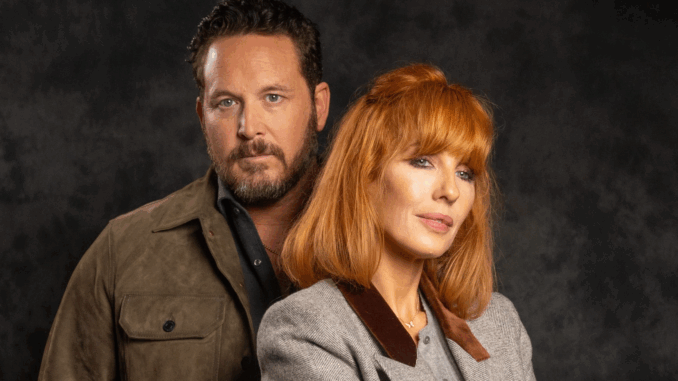
The Yellowstone universe has become more than just a TV show — it’s a full-fledged cultural phenomenon that’s redefined modern Western storytelling. With gripping drama, generational conflict, and cinematic landscapes, this Taylor Sheridan-created saga has captured the attention of millions. But beyond the cowboy hats and cattle ranches lies a deeper world of power, family loyalty, and unflinching morality.
Let’s saddle up and explore 7 key perspectives that reveal why the Yellowstone universe has become a storytelling empire in the American West.
1. A Modern Western With Old-School Grit
Yellowstone took the traditional Western genre and breathed new life into it. While it has all the staples — sweeping Montana landscapes, stoic cowboys, and land wars — it also dives into contemporary themes like corporate greed, Native American rights, environmental politics, and the dark side of legacy. It’s not just cowboys and cattle; it’s capitalism versus tradition, survival versus morality.
2. The Dutton Family: Love, Loyalty, and Ruthlessness
At the center of it all is the Dutton family — led by the iron-willed John Dutton (played by Kevin Costner). Each family member brings their own demons and depth. Beth Dutton’s fierce intelligence and unapologetic strength, Jamie’s constant search for approval, Kayce’s struggle between two worlds — all reflect a family torn by power, loyalty, and the trauma of legacy. The Duttons don’t just fight for land. They fight for survival.
3. Expanding the Universe: 1883 and 1923
The spinoff series 1883 and 1923 take us deep into the roots of the Dutton dynasty. 1883 follows the original journey of the Dutton ancestors as they make their way west in a brutal, unforgiving land. 1923 explores a turbulent era shaped by prohibition, the Great Depression, and war. These shows are more than prequels — they give historical weight and emotional depth to the Dutton family’s legacy, showing how hardship built an empire.
4. Taylor Sheridan’s Signature Style
Creator Taylor Sheridan brings a unique, gritty authenticity to Yellowstone. His dialogue is sharp and realistic. His characters are layered, morally complex, and emotionally raw. Sheridan doesn’t write cowboys as romanticized heroes; he writes them as flawed, principled people who do what’s necessary to protect what’s theirs. His vision has turned Yellowstone into one of the most compelling modern dramas on television.
5. The Land as a Living Character
Montana isn’t just a backdrop — it’s a character. The sprawling plains, snow-capped peaks, and vast skies create a visual experience that elevates the emotional tone of the show. Every plot twist feels magnified by the dramatic landscape. It’s a place that’s both beautiful and brutal, and it mirrors the tension within the story itself. The land means everything to the Duttons — and Sheridan makes sure we feel that in every scene.
6. Cultural Conflict and Real-World Issues
Yellowstone tackles complex issues like Indigenous land rights, the clash between modern development and traditional ranching, and environmental exploitation. The series doesn’t shy away from hard truths, especially through characters like Chief Thomas Rainwater, who brings a vital Native American perspective to the show. This blend of drama with real-world tensions adds depth and relevance to the series.
7. The Mythology of Power and Protection
At its core, Yellowstone is about protecting something bigger than yourself — whether it’s family, land, or legacy. The violence and chaos often seen in the series aren’t just for drama. They represent the moral cost of power, the burdens of leadership, and the sacrifices required to preserve a way of life. It’s this mythic lens — of men and women fighting to hold onto their world — that elevates Yellowstone from just another drama into a modern legend.
Conclusion: The Wild West Rides Again
The Yellowstone universe isn’t just entertaining — it’s compelling, raw, and deeply American. It captures the push-and-pull between progress and tradition, ambition and sacrifice, family and duty. With spinoffs like 1883, 1923, and more shows on the way, Taylor Sheridan’s modern Western empire isn’t slowing down anytime soon.
Whether you’re in it for the family drama, the scenic landscapes, or the cowboy grit, Yellowstone has something for everyone. It’s not just a show. It’s a movement — one that’s redefining how we see the American West.
FAQs
1. Do I need to watch 1883 or 1923 to understand Yellowstone?
No, but watching them gives more context to the Dutton family’s history and makes the story richer.
2. Is Yellowstone based on real events?
While the show is fictional, it draws inspiration from real issues like land disputes, Indigenous rights, and ranching culture in the American West.
3. Why is Beth Dutton such a popular character?
Beth’s fierce loyalty, sharp wit, and emotional complexity make her one of the most layered and unforgettable characters in the series.
4. Will there be more Yellowstone spinoffs?
Yes, Taylor Sheridan has confirmed several upcoming spinoffs that will expand the Dutton universe even further.
5. What makes Taylor Sheridan’s writing stand out?
His writing blends cinematic storytelling with authentic dialogue and morally complex characters, creating a world that feels both epic and grounded.
